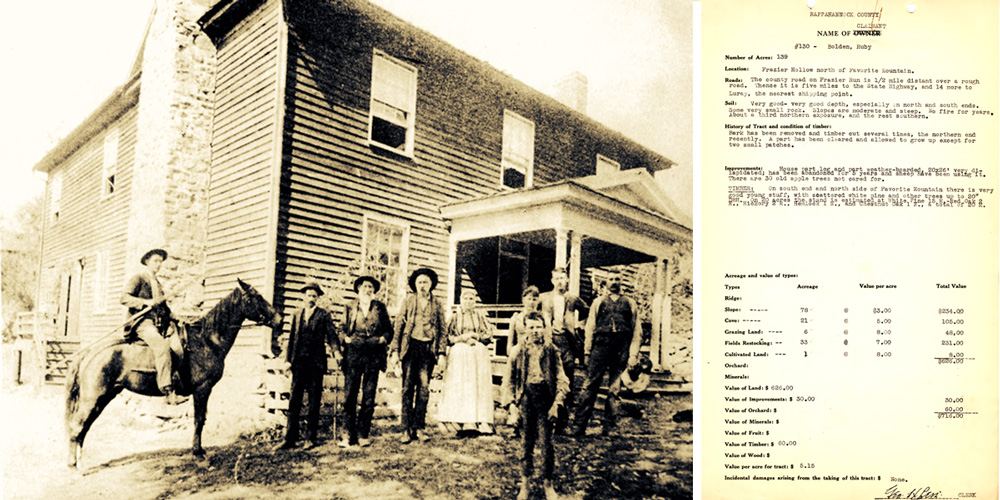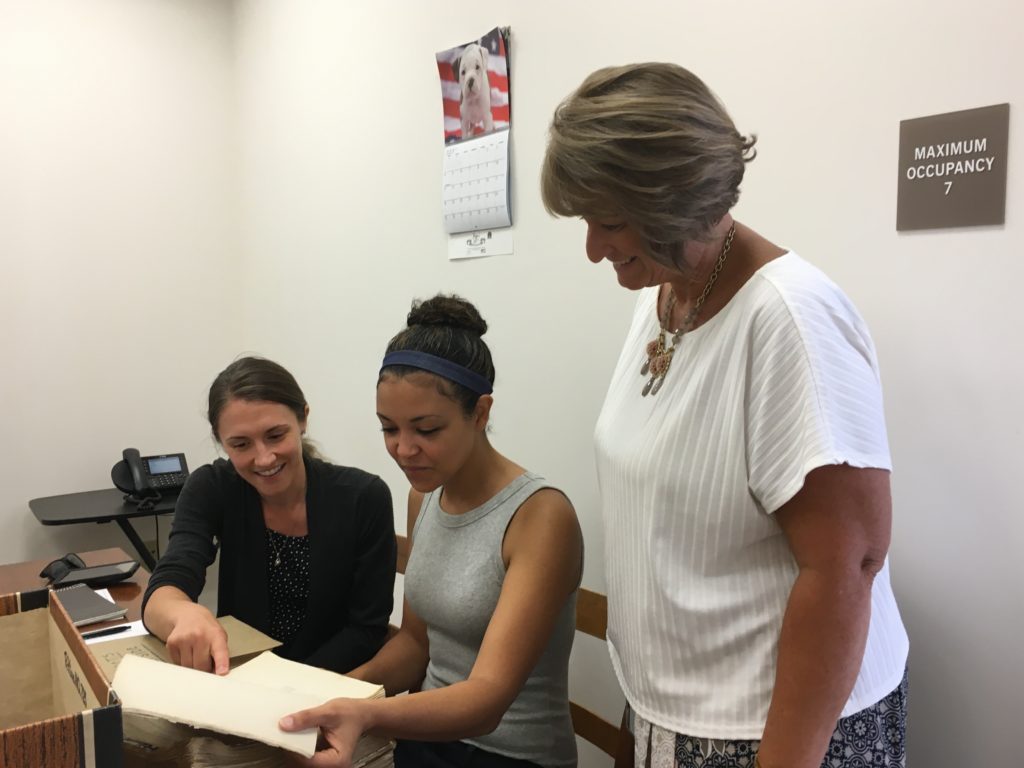
In the 1930s, nearly 200,000 acres of privately-owned land in eight Virginia counties were taken by the State of Virginia via eminent domain for the creation of Shenandoah National Park. Thousands of people lost their land, homes, and for many, the only way of life they had ever known.

“Landowners with clear title were compensated, but some families did not possess a title to the land on which they lived. Many were tenants or caretakers for absentee owners, and a few resided on land that had supported their families for generations, but was actually owned by others. Compensation varied from property to property. Some received what they considered fair value for their loss, while many did not,” according to the Blue Ridge Heritage Project.
The takings were initiated by the State of Virginia, under the provisions of the 1928 Public Park Condemnation Act. In 1931, the Commission on Conservation and Development instituted proceedings in the circuit court of each of the eight counties were land was condemned.
Any formal records or information about these properties has been scarce and inaccessible until recently.
In 2017, James Madison University began an effort to digitize the thousands of legal documents related to the condemnation of private land within the eight counties for the creation of the Shenandoah National Park. The goal is to make all of the deed book records, court proceedings and individual condemnation case files publicly accessible and searchable via an online database. The effort will forever memorialize the sacrifice made by so many, for the creation of a national resource we all enjoy today.
JMU first partnered with the Rockingham County Clerk’s office to digitize more than 6,000 documents related to the seized Rockingham County properties. To assist JMU with the continuation of this important project, The Piedmont Environmental Council worked with the Rappahannock County Clerks’ Office in 2019 to oversee the digitization of condemnation records for Rappahannock County properties. PEC recently completed the digitization of records for Madison County properties at the end of 2021.
PEC hopes to continue the project by working with the five remaining counties (Albemarle, Augusta, Greene, Page and Warren Counties) to digitize their condemnation records and grow the database in the coming years.
What’s in the database?
As of 2021, the database includes documents for Rockingham, Rappahannock and Madison counties.
The documents in this digital collection can be used in a number of ways. Genealogists and family members will be able to research, by surname, the history and circumstances of their family’s land loss. Researchers interested in Appalachian culture will find detailed information within the tract assessments for properties surveyed. Each tract record includes a formal survey (oftentimes with a house location shown), a detailed assessment with a description of all property improvements, and the value of the property’s natural resources, including timber and fruit trees. Some files also include useful title information.The database also contains records of the actual condemnation proceedings, interesting from a legal perspective given that the creation of the Park represents one of the largest eminent domain seizures in the history of Virginia.
How to access the database:
The digital collection of condemnation records can be accessed through James Madison University’s Histories along the Blue Ridge webpage by clicking on “Browse Digital Collections.”
Records for Rockingham, Rapphannock and Madison counties are organized into three categories, and can be searched by surname in all categories:
- The Court Proceedings are the legal proceedings for each individual tract of land that made up the one court case. In most cases, individual case files include property surveys, assessments for the value of the land and improvements, and claims by the owner of the property.
- The Muniments of Title collection includes the recorded transfer of title in the Deed Books, including boundary descriptions for all acquired properties.
- Miscellaneous Documents includes correspondence, petitions, orders, proceedings from the law and order book and affidavits. An additional file of interest to researchers is the Panorama File, which includes detailed information on the history of the Panorama Resort.
Thank you to project partners!
- James Madison University
- William Dietel
- Jennifer Manly
- Rappahannock County Clerk’s Office
- Madison County Historical Society
- Madison County Clerk’s Office
- Shenandoah National Park
Additional resources and information
- Blue Ridge Heritage Project
- Exploring Shenandoah National Park History
- Read more about Blue Ridge mountain settlements in the Piedmont View
Questions about the project? Contact PEC’s Historic Preservation Coordinator Kristie Kendall at [email protected].
